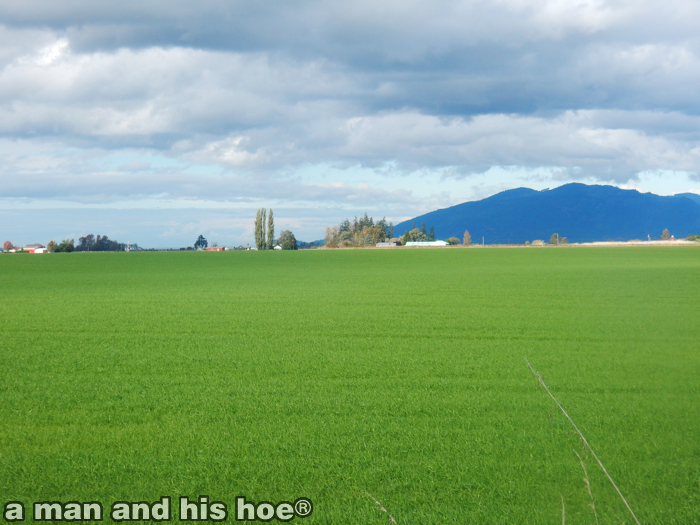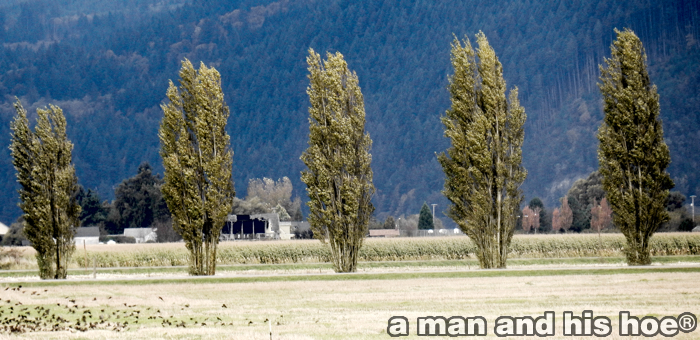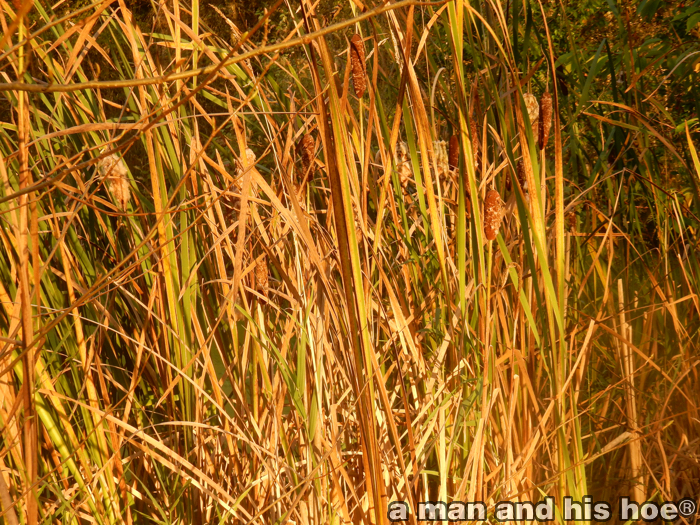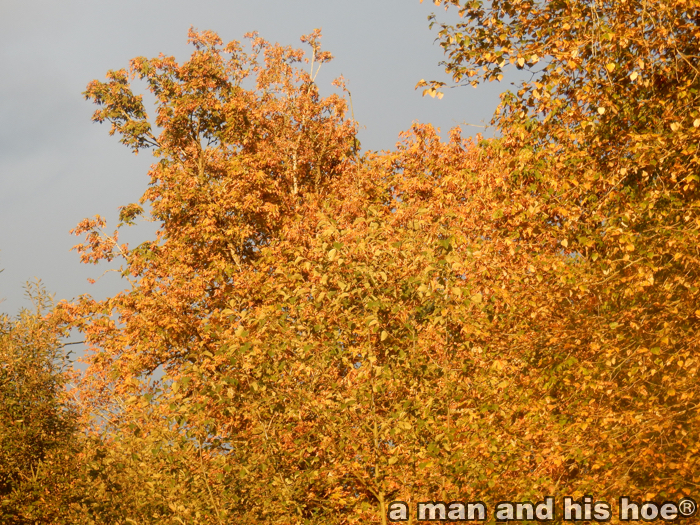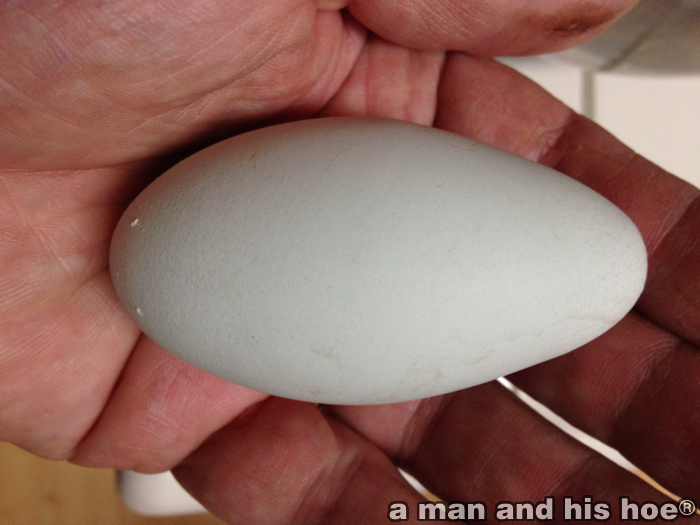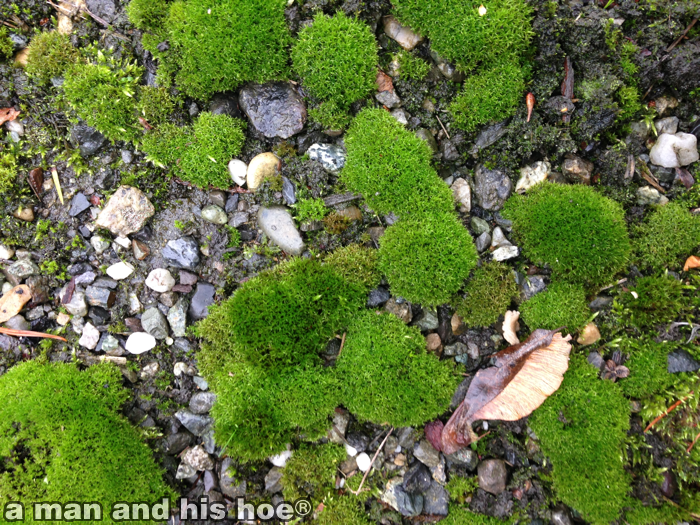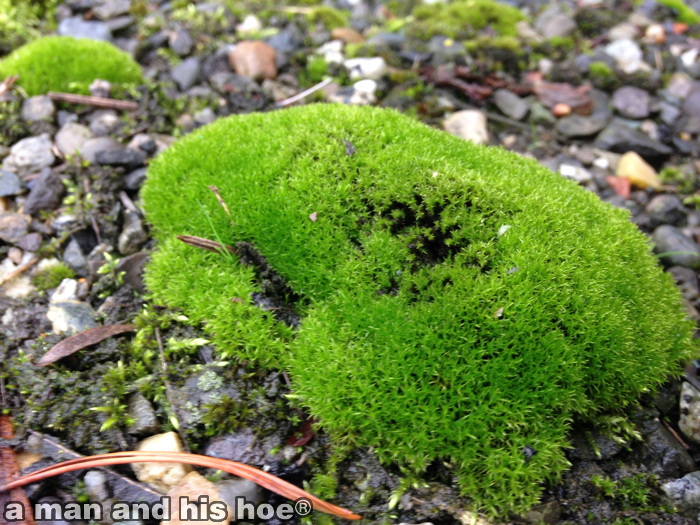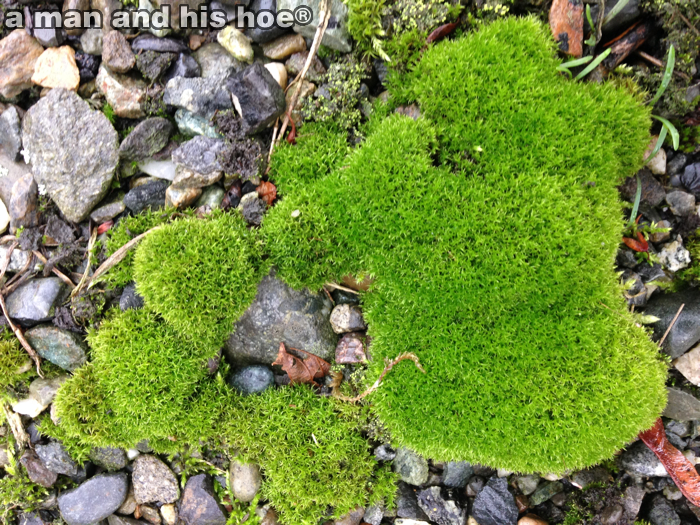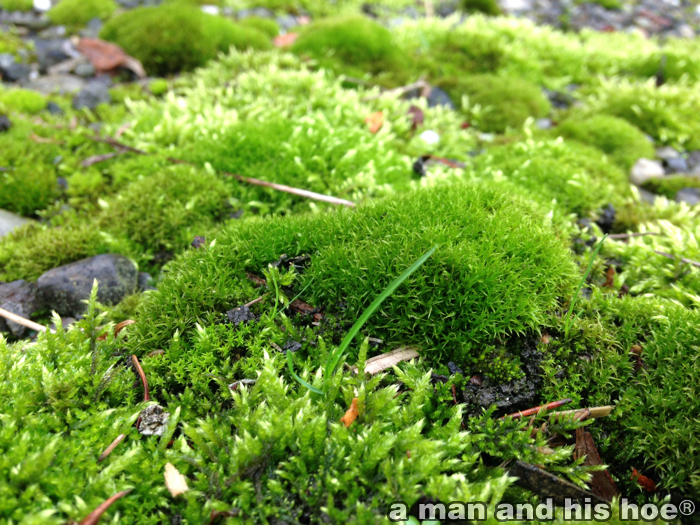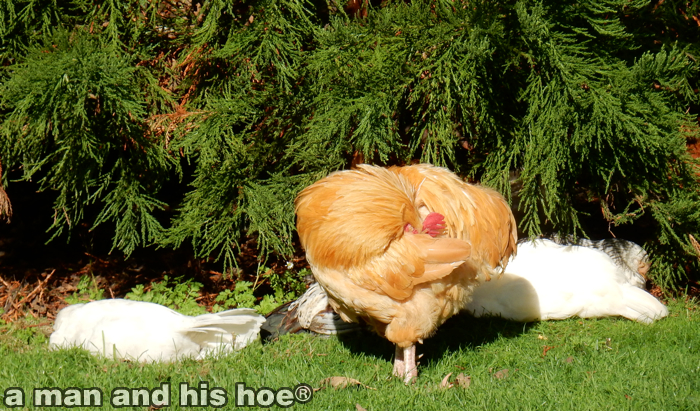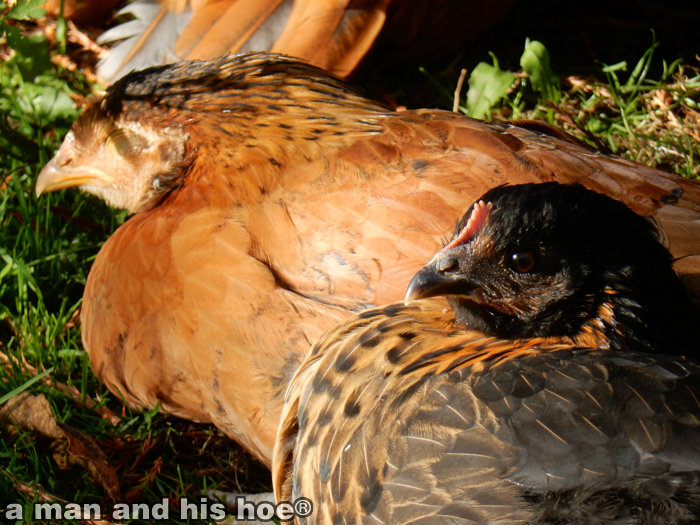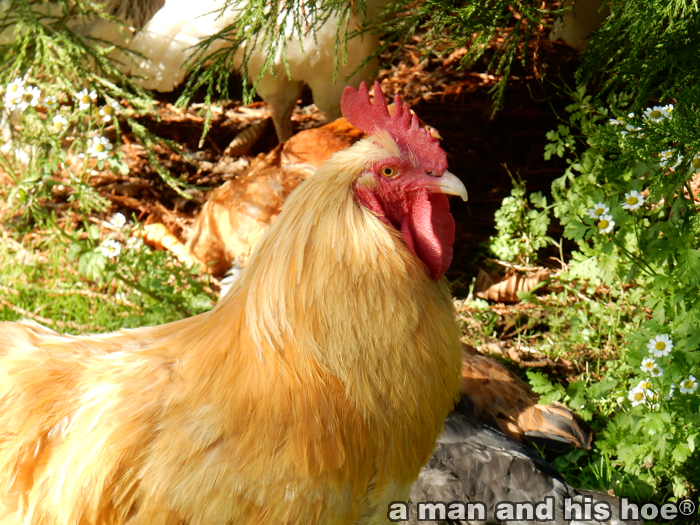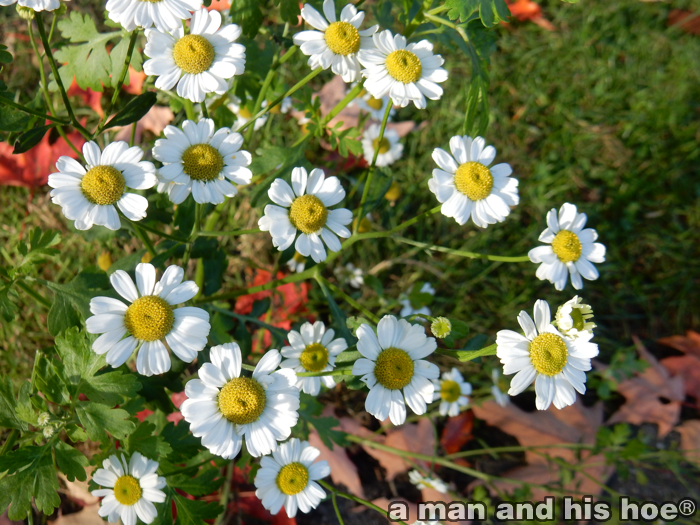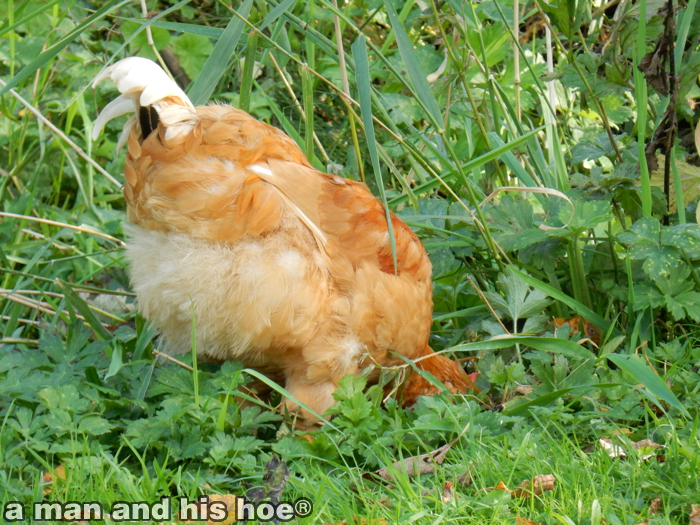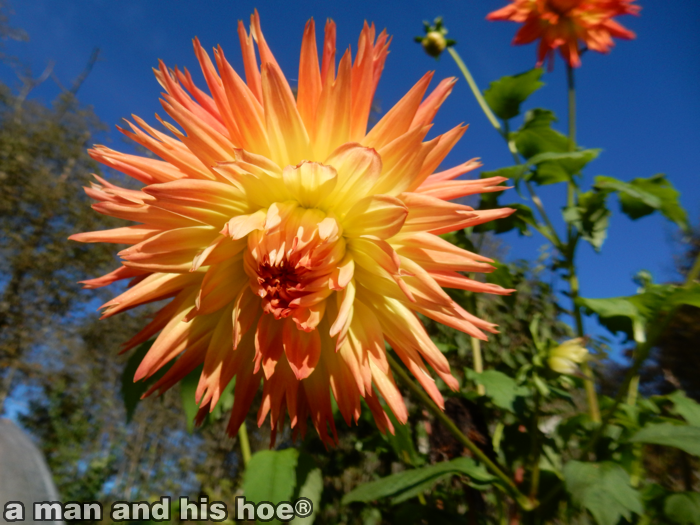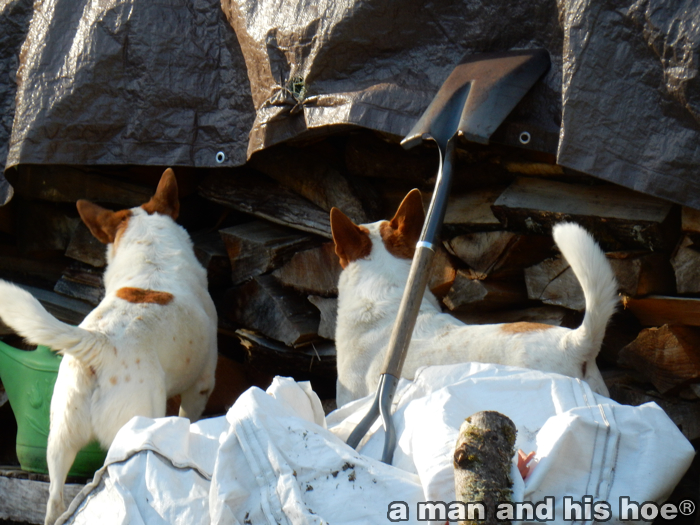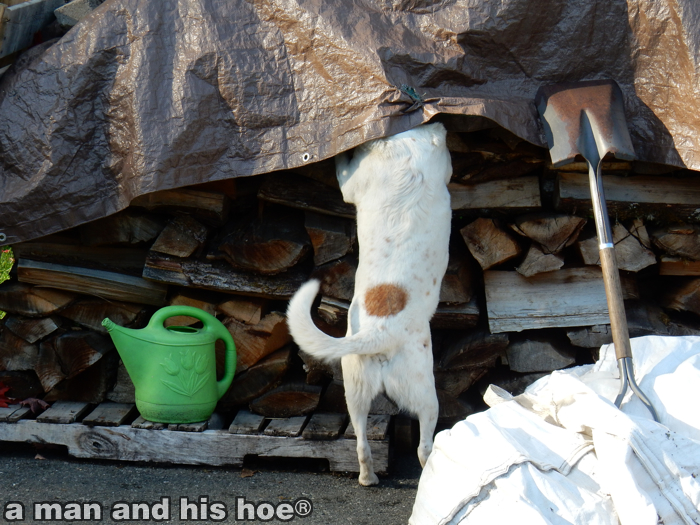
When you’re picking beans or leafy greens or fruit from a tree, it’s easy to forget the importance of dirt. You can’t escape dirt when you’re digging up potatoes. Digging up potatoes on a wet, windy day can be downright dirty. You have to overcome your fear and disdain of touching dirt and mud.
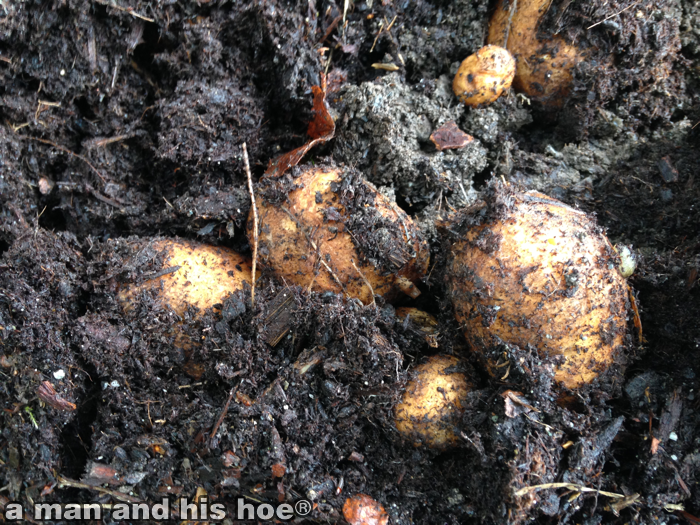
Potatoes clean up easily. I recommend washing off all the dirt and mud outside. It also gives you a chance to give bits and pieces, you don’t want to bother with, to your chickens. Freshly dug potatoes are full of starch and you can make some great, chewy dishes with them. Let the potatoes sit too long, and the starch turns to sugars, changing the texture and flavor of your potatoes.
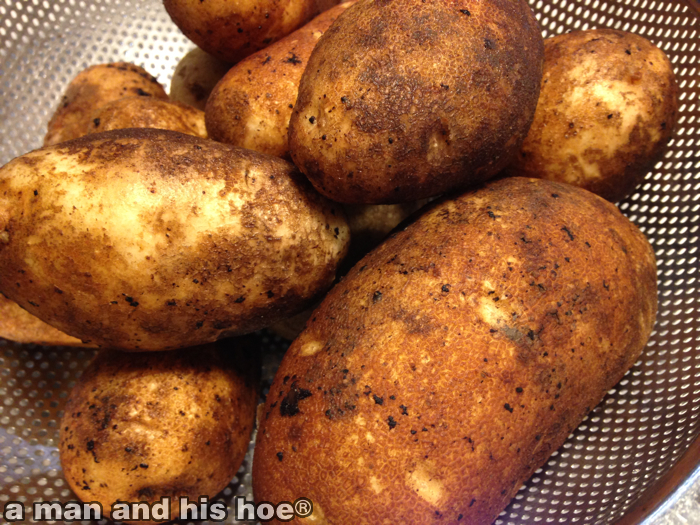
Not too long ago I watched a show on some interesting dishes you can make with new potatoes. Sorry, but the show was in Japanese 新ジャガ!感動5連発 常識破り調理で新食感. One dish they showed, and you must use new potatoes, was a mochi. Usually, mochi is made by pounding steamed sticky rice until it becomes a sticky, gluey mass. You then shape it into balls and eat it while it is still warm and soft, or let it dry out, and later cut it up and add it to soups or broil it. You can make something similar with new potatoes. You first peel and quarter them. Wash them and boil them for 30 to 40 minutes. Then you let them cool until they are room temperature. This is a critical step. Once they are cool, drain them, and pound them. It can take a fair amount of muscle as the potatoes get very gluey as you pound them. You will end up with a gluey mass which you can then shape into balls.
One thing I learned from the show was that no country eats more potatoes per person than Belarus: over 400 pounds per person each year (185 kilos). In the USA, even with all the French fries consumed, the amount is a paltry 119 pounds (54.2 kilos). There are more than 300 potato dishes in the cuisine of Belarus. Here is one for Belarussian Potato Babka.
